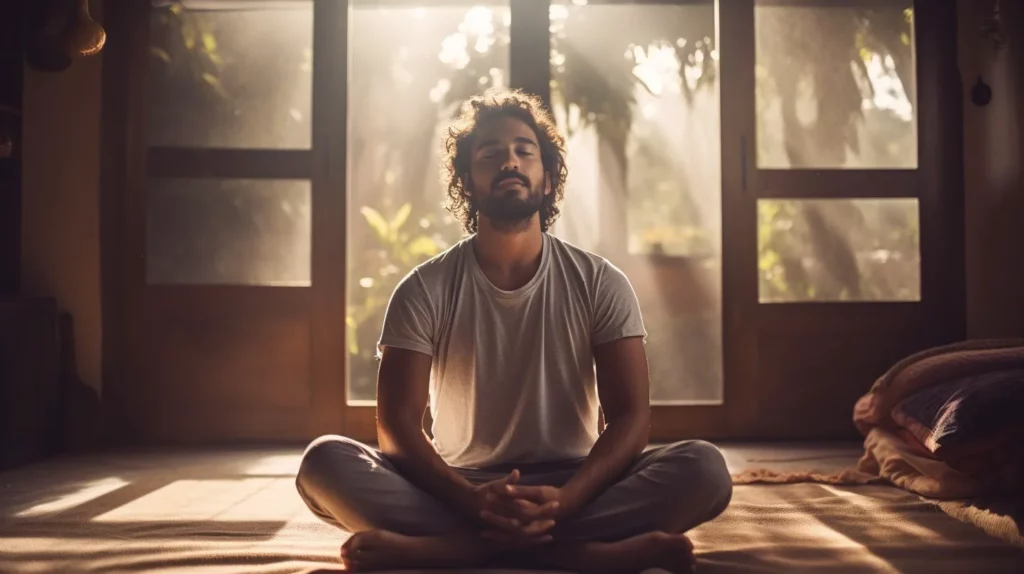
In the bustling chaos of our modern lives, finding moments of tranquility and inner peace has become more crucial than ever. Meditation, an age-old practice with roots in various cultures, offers a sanctuary for the mind amidst the storm of daily life. However, with the myriad of meditation styles available, it can be challenging to discern which one resonates most with your individual needs and preferences. Join us on a journey of self-discovery as we explore different meditation styles, helping you find the one that works best for you.
Mindfulness Meditation
At the forefront of popular meditation practices is mindfulness meditation. Stemming from Buddhist traditions, this style encourages practitioners to focus on the present moment without judgment. By observing thoughts and sensations without attachment, individuals can cultivate a heightened awareness of their surroundings and inner thoughts. Mindfulness meditation is an excellent starting point for beginners and those seeking stress reduction.

Transcendental Meditation
Transcendental Meditation is a mantra-based technique that involves silently repeating a specific sound or word. TM practitioners report a deep state of restful awareness, promoting relaxation and mental clarity. This style is known for its simplicity, making it accessible to people of all ages and backgrounds.
The Transcendental Meditation technique is taught through courses offered by certified instructors at local TM centers or through books and audio programs available online or at local bookstores. The basic course includes four days of instruction on how to practice meditation with the guidance of an instructor who has completed the training program. After this course, students can continue their practice with their instructor on a weekly basis for as long as they wish.
Loving-Kindness Meditation
In this style of meditation, practitioners direct their attention inward to cultivate feelings of love and compassion towards themselves and others. This type of meditation has been used in Buddhism since ancient times as a way to develop positive emotions toward oneself and others. It’s also known as “Metta” or loving-kindness meditation in some traditions.
Loving-kindness meditation is often taught alongside other Buddhist practices like mindfulness meditation, but it can also be practiced on its own. If you’re new to meditation or want to explore different styles beyond mindfulness, learning how to do loving-kindness meditation might be a good place to start.
The practice begins by directing positive feelings towards oneself. Practitioners then extend these feelings outward until they encompass everyone they know — including those they may have conflicts with. This process unfolds over several weeks as you gradually expand your circle of compassion until it encompasses all beings in the universe. When practiced regularly, Loving-Kindness Meditation can help cultivate an attitude of gratitude and appreciation for life’s little pleasures — like listening to music or enjoying a cup of coffee on a rainy day.
Body Scan Meditation
Meditation is a powerful practice that can help us feel more relaxed, focused and peaceful. There are many different types of meditation, but the most common ones fall into two main categories: focused and open monitoring.
The body scan meditation is one of the easiest and most accessible meditation practices. It can be done sitting or lying down, and there are no special instructions for how to sit or lie down.
The body scan meditation is a form of mindfulness meditation. This type of meditation involves paying close attention to different parts of your body, starting at your head and moving down to your toes. You’ll typically spend 10 minutes focusing on each region before moving on to another area. This style encourages relaxation and body awareness, making it an ideal choice for individuals dealing with chronic pain or tension. By bringing attention to bodily sensations, practitioners can release pent-up stress and promote overall well-being.
Guided Meditation
Guided meditation is an excellent way to get a beginner started on the road to mindfulness. This style of meditation involves following the instructions of a meditation teacher or recorded audio. This style often leads participants through visualizations, breathwork, or other techniques aimed at achieving specific goals, such as stress reduction, improved focus, or increased self-awareness.

Guided meditations can be extremely effective in helping you achieve your desired outcome. They are especially helpful for those who find it challenging to meditate without assistance. The guided meditation will often guide you step by step through the process of relaxation and then into deeper states of awareness.
Embarking on the path of meditation is a personal journey that evolves over time. Exploring different meditation styles allows you to discover the one that resonates most with your unique needs and preferences. Whether you prefer the introspective nature of mindfulness meditation, the tranquility of Transcendental Meditation, or the warmth of Loving-Kindness Meditation, the key is to find a practice that feels authentic and sustainable for you. As you delve into the diverse world of meditation, remember that the journey itself is a profound experience of self-discovery and growth.
RUCHI RATHOR Founder & CEO
Payomatix Technologies Pvt. Ltd.
FOUNDER AND INVESTOR | PAYMENTS PROCESSING EXPERT | MERCHANT ACCOUNT SOLUTIONS | WHITE LABELLED PAYMENT GATEWAY | Dreamer, Creator, Achiever, Constantly Evolving
Website Ruchi Rathor: https://ruchirathor.com
Website Healing Heart https://thehealingheart.me/
Instagram https://www.instagram.com/_ruchirathor_/
LinkedIn https://www.linkedin.com/in/ruchirathor12/
Facebook https://www.facebook.com/ruchi.rathor.magnificient
Tumblr https://www.tumblr.com/blog/ruchirathor-thehealingheart
Medium https://medium.com/@ruchirathor_23436









